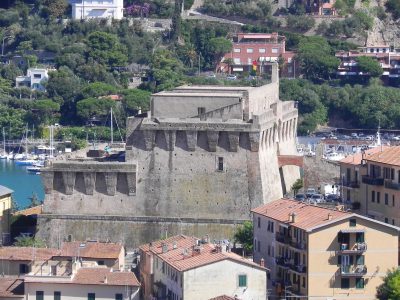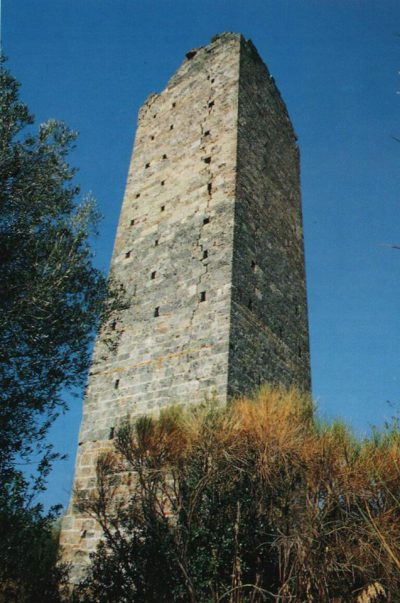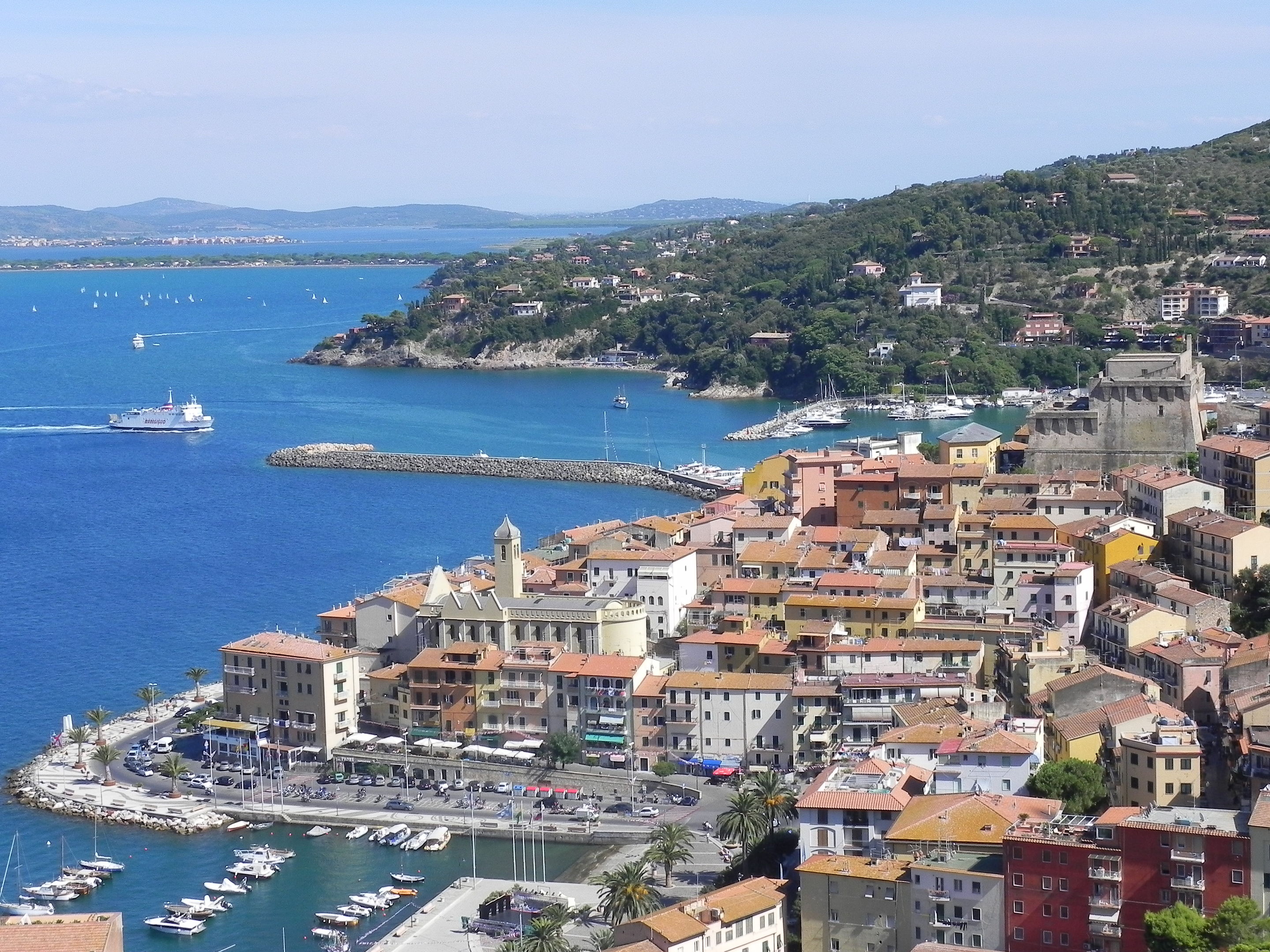Porto Santo Stefano is located in the Maremma Grossetana and part of the Costa d’Argento at the southern end of Tuscany, it has a great seafaring tradition. It is a active commercial, fishing and seaside resort. The town, known for its tourist vocation, is a center of international importance for sailing and pleasure boating. Together with Porto Ercole, it is one of the two major settlements that make up the municipality.
Places of Interest
•Baths of Domitian, remains of the Roman villa.
Near Santa Liberata, in the locality of Villa Domizia, there are the remains of a Roman villa dating back to the 1st century. BC built by the Domitii Enobarbi, family of the emperor Nero. The villa was equipped with a pond for fish farming, the so-called cetariae, with a complex system of cisterns, tunnels, reservoirs, thermal pools and port structures. A third century pilot book. A.D. remember that the place was marked with the name of Domitiana positio, in a list of landing places and ports dating back to the imperial age. In 1572, the tower of Santa Liberata was built on top of the Roman ruins and the upper part was destroyed by the Germans in 1944 during the Second World War. Due to the presence of the Domitii Enobarbi, Monte Argentario has been, over the centuries, the site of numerous discoveries of historical material: bricks, ceramics, walls and Roman roads.

Spanish Fortress
•Spanish Fortress built between the end of the 16th and the beginning of the 17th century with the entry of Porto Santo Stefano into the State of Presidi, in order to defend the coast and the town; and repel enemy attacks and raids from the sea. The works, which proceeded slowly, were finished in 1636 with some improvements made by the military engineer Pedro Álvarez. In the early 19th century, during the Napoleonic period, the fortification was strengthened by the French to resist the assaults of British ships. Restructured by the Lorraines after its annexation to the Grand Duchy of Tuscany, the fortress continued to perform military functions even after the unification of Italy, serving as a strategic garrison during the First World War. After the Second World War it was partially modified with the addition of two buildings to temporarily house the offices of the Municipality.
• Grotta di Punta degli Stretti (of the Granduca), is located along the provincial road 161 which leads from Orbetello to Porto Santo Stefano, discovered in 1842, it is characterized by the presence of internal lakes; with numerous halls and galleries, destinations for frequent excursions. In it were remains of bones and utensils from the Neolithic age found.
•The convent of the Presentation in the Temple is located in Monte Telegrafo, in the municipality of Monte Argentario, in the province of Grosseto. The complex is the mother house of the Congregation of Passionist Fathers and is made up of a convent and the church. The construction work began in 1733 and was completed in 1737. The façade, built in 1856, has a neoclassical” façade. The interior retains some important works: the Madonna and Child delivering to Saint Paul of the Cross the project of the convent, by Pietro Aldi (1880), which can be taken as a manifesto of the congregation; the “Presentation of Mary at the temple”, by Sebastiano Conca; the “Madonna and Child holding the Sacred Heart and Saint Joseph in the background“, by Pompeo Batoni.
Much venerated is the image called “Madonna di Monte Argentario” of the Roman school of the 18th century. On the altar of the right transept is the canvas with an image of the Magdalene from the 18th century and, on the left altar, a Saint Michael, a copy of the homonymous subject by Guido Reni from the Chiesa dei Cappuccini in Rome.
In the crypt there are both the statue of the founder of the order (in travertine) and a bas-relief, also in travertine, representing the strong> landing at the Argentario of San Paolo della Croce. Finally, inside the church you can admire a bronze urn with the remains of the young Passionist the venerable Galileo Nicolini by the sculptor Tito Amodei.
• Torre di Capo d’Uomo (Monte Argentario) is a coastal tower located in the municipality of Monte Argentario on the top of the hill of the same name, which rises in the western part of the promontory dell’Argentario, in a dominant position towards the sea, almost halfway between Porto Santo Stefano and Porto Ercole.
The tower was built in the Middle Ages most probably by the Aldobrandeschi. In the second half of the sixteenth century the tower became a fundamental reference for the defensive system of the Presidii State, being able to send light signals between the Torre di Cala Piccola and the Torre della Maddalena, which were unable to communicate visually between them.
The tower continued to perform its original sighting functions for centuries, being definitively decommissioned only in the nineteenth century.
Today it appears in the form of clearly visible ruins, in a dominant position, even in the distance from the panoramic road that winds along the western coast of the Argentario promontory.
•The Torre dell’Argentiera is a coastal tower located in the municipality of Monte Argentario. It was built in the medieval era when the entire territory was controlled by the Aldobrandeschi. At that time the turriform building was located in the center of an enclosed area

The Argentiera Tower
from the curtain walls of an external fort.
The early decommissioning of the defensive structure determined the slow but inexorable degradation that the entire complex underwent, resulting in the inevitable loss of the external fort over time; currently, the military architectural structure is municipal property.



